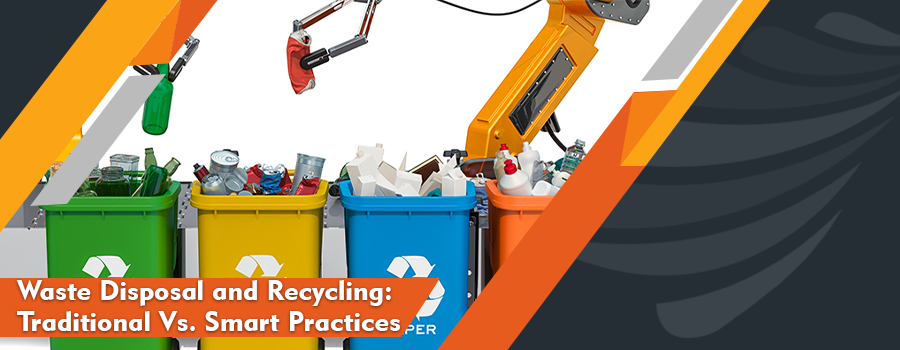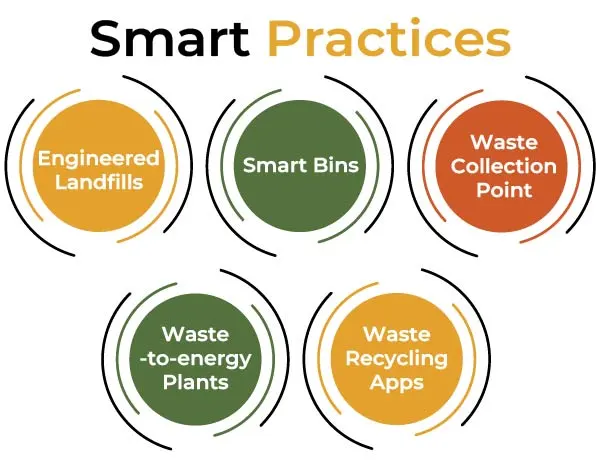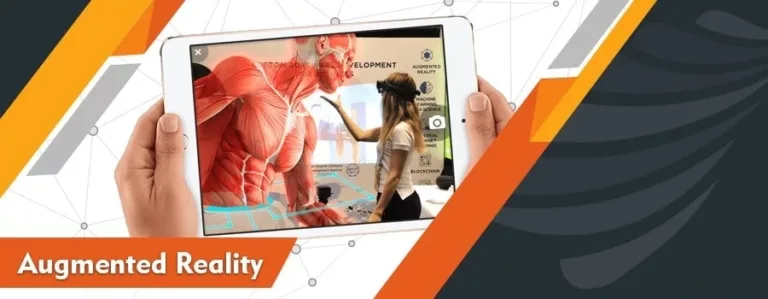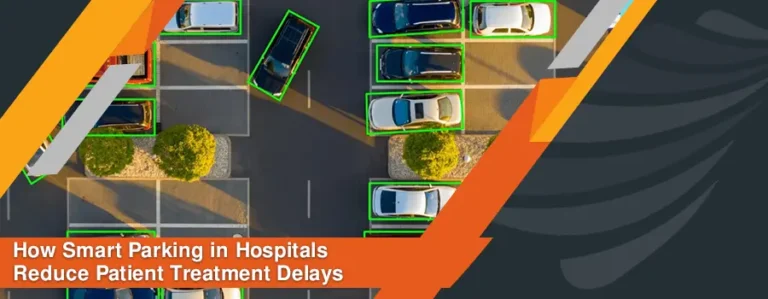Waste production and pollution have become major problems on this planet. According to a survey, over 2.1 billion tons of municipal solid waste is generated annually. This creates a hugely adverse effect on our environment and us in it. Thus, in every country, there should remain immense stress on waste disposal and recycling.
Furthermore, several traditional waste management methods have been adopted by many countries till now. However, owing to the lack of research, proper management, and hidden cons of such methods, they are causing other negative impacts on the atmosphere. This is why countries especially developed ones, have adopted and modified different waste management techniques over time. It is the technological advancement that has made things easy and smart in regard to waste disposal and recycling. The waste management industry is rethinking and adapting modern strategies and smart disposal practices to increase efficiency and improve environmental protection.
Hence, it is and will be an apt decision by any country to incorporate new and IoT-based practices for waste management. Also, this has increased the research and development of smart waste management technology. As a result, this will not only help in waste disposal but will help us extract additional indirect benefits from it.
Below are several traditional and smart practices of waste disposal:
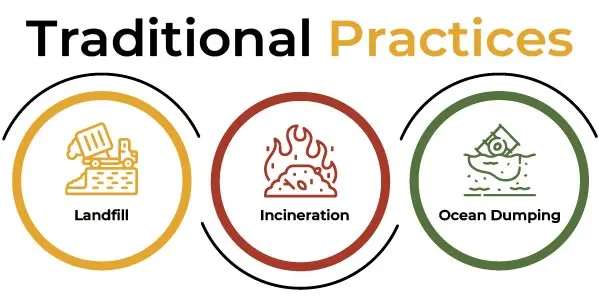
Traditional Practices
• Landfill
The landfill is one of the traditional waste disposal practices that involves covering household or commercial solid waste substances with the soil. Synonymously, dumpsites can also be taken as an example of landfills. It functions as a way of breaking down the trash. However, in reality, it is merely burying them since this process can take a long time. Seemingly, these can be not only an eye soreness but also a source of pollution. If these landfills remain unmonitored and less maintained, they can cause leachate, toxins, and greenhouse gases- a problem for future generations.
• Incineration
Another popular traditional method that is used worldwide for waste disposal is incineration. It is the combustion of solid waste into ash and gas. The waste volume is reduced by about 90%, but it releases hazardous air pollutants, including particulate matter (PM2.5 and PM10), carbon monoxide, nitrogen oxide, acid gases, and cancer-causing substances. This can increase the incidences of cancer and the possibility of respiratory diseases in the masses.
• Ocean Dumping
Ocean dumping is another traditional practice of waste management. It is all about the deliberate dumping of waste materials like garbage, construction and demolition debris & materials, sewage sludge, and waste chemicals from industries in the ocean. As a result, it can severely harm aquatic life by causing a lack of oxygen in the water. Aquatic animals can get contaminated and die. Plus, consuming such contaminated fish can cause dementia, amnesia, and synonymous mental diseases in humans.
Smart Practices
• Engineered Landfills
As per research, The U.S. alone produces 268 million tons of waste, from which 140 million go into landfills annually, which makes approximately 4.5 pounds of trash per day. And given the severe cons of ordinary landfills discussed above, it is pertinent for us to integrate technological implementations into this practice.
Modern engineered landfills are created with protective lining at the base to serve as a barrier and prevent the leakage of toxic chemicals into other land or water zone. Plus, highly engineered landfills have the necessary technological capacity to extract carbon dioxide and methane gases, which can later be filtered and used for energy production. Also, solar panel systems have been used with geomembrane in these landfills that prevent CO2 re-emission in the surroundings while producing sustainable energy.
• Smart Bins
Recent development in the I.T. sector has transformed the way one can manage waste disposal obligations. Different IoT-powered products and solutions are available in the market that smartly manages solid waste products.
BinWise is an epitome of such IoT solutions that operate on automated sensors that instantly alert the waste managers when the container is full or needs some maintenance. Plus, they can provide the waste collection truck with the real-time shortest route to their locations. Nevertheless, smart software, IoT-based sensors, and apps have made waste management easy, eco-friendly, and efficient.
• Waste Collection Point
Among different smart waste disposal solutions, there are waste collection points. Though like smart bins, their purpose is to collect waste materials like plastic bottles and cans, they reimburse you as a receipt. This receipt can later be used to redeem cash or discounts from the cashier. Such electronic IoT-based devices have sensors that detect the number of bottles put in the machines while analyzing their recycling condition. Nonetheless, these kinds of waste collection points or container deposit logs and their refund policies have also instilled ideal waste disposal and recycling habits in the general public.
• Waste-to-energy Plants
Technological advancement has made it possible to generate energy from our waste. Waste-to-energy plants can utilize solid waste or common garbage to produce electricity. Solid or municipal solid waste includes biogenic materials like paper, cardboard, food waste, wood, leaves, etc., or non-biomass combustible materials like plastics, synthetic substances, glass, and metals. Waste-to-energy plants then burn these materials in a controlled atmosphere at a higher temperature and use their heat for steam, which in turn helps generate electricity and energy.
• Waste Recycling Apps
Another smart practice for waste management and recycling can include smart recycling applications. It is a matter of fact that almost all have smartphones in their pockets, and to make waste management easy and effective, smart recycling apps can be utilized for such purposes. Users or commoners can download such apps on their phones to acquire information regarding the recycling process and centers near them. It can further help the public by providing a comprehensive list of recycling items before visiting recycling centers. Moreover, such apps can also instill awareness in the general public about waste management and efficient habits of the three R’s: reduce, reuse and recycle. This could be a seamless, holistic approach to managing waste and preventing pollution.
To Sum up…
Owing to the rapidly growing population and urbanization, waste disposal, and recycling in any country have become an important area of concern. Traditional practices and methods have become obsolete and pose further adversarial effects on us and the atmosphere. Hence, we must utilize newer and better smart waste management solutions and practices to save our environment and its precious life. This will, in turn, enhance the process of solid waste management by curtailing its negative impact while efficiently reaping its advantages for humanity.

